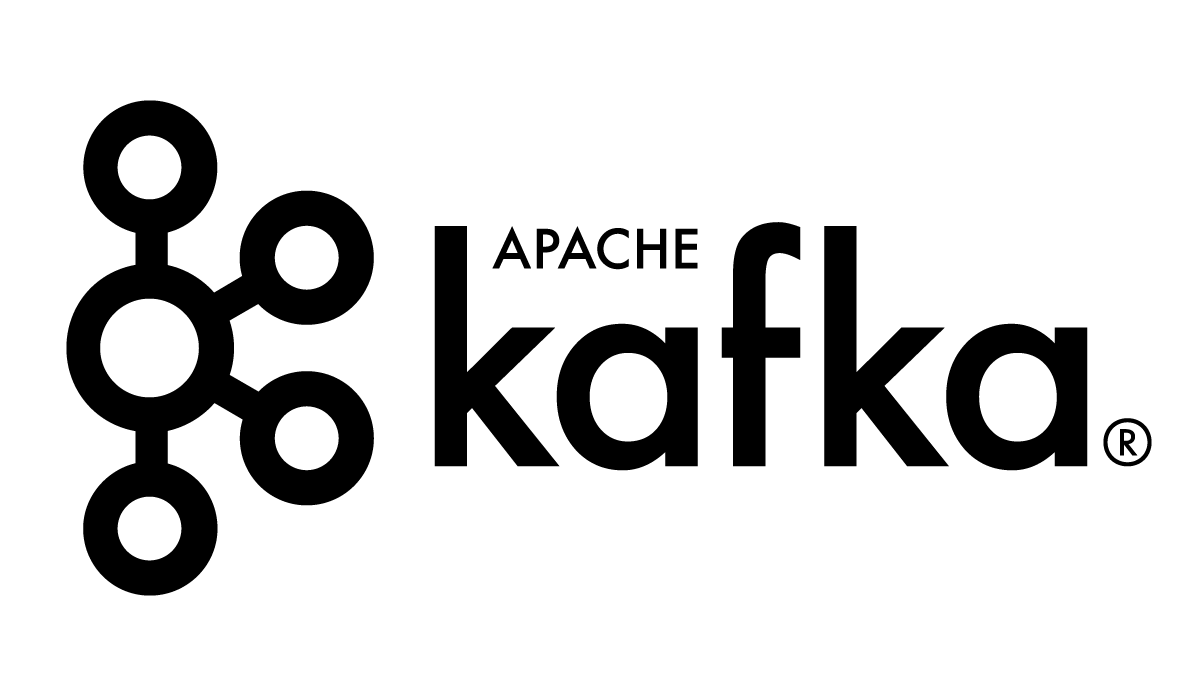传输控制协议(英语:Transmission Control Protocol,缩写:TCP)是一种面向连接的、可靠的、基于字节流的传输层通信协议,由 IETF 的 RFC 793 定义。在简化的计算机网络 OSI 模型中,它完成第四层传输层所指定的功能。
毫不夸张地说,TCP 协议是目前整个互联网的基础。它解决了一系列的网络问题。带来的结果,就是协议本身非常复杂。考虑到文章篇幅问题,本文着重说明 TCP 建立连接时的三次握手过程和关闭连接时的四次挥手过程。
三次握手 图 1. TCP 三次握手 第一次握手(SYN=1, seq=x):
客户端发送一个 TCP 的 SYN 标志位置 1 的包,指明客户端打算连接的服务器的端口,以及初始序号 x,保存在包头的序列号(Sequence Number)字段里。
发送完毕后,客户端进入 SYN_SEND 状态。
第二次握手(SYN=1、seq=y;ACK=1、ACKnum=x+1):
服务器发回确认包(ACK)应答。即 SYN 标志位和 ACK 标志位均为 1。服务器端选择自己 ISN 序列号,放到包头的序列号(Sequence Number)字段里,同时将确认序号(Acknowledgement Number)设置为客户的 ISN 加 1,即 x+1。
发送完毕后,服务器端进入 SYN_RCVD 状态。
第三次握手(ACK=1,ACKnum=y+1)
客户端再次发送确认包(ACK),SYN 标志位为 0,ACK 标志位为 1,并且把服务器发来 ISN 的序号字段+1,放在确定字段中发送给对方,即数据段放写 y+1。
发送完毕后,客户端进入 ESTABLISHED 状态,当服务器端接收到这个包时,也进入 ESTABLISHED 状态,TCP 握手结束。
SYN Flood 攻击 在三次握手过程中,服务器发送 SYN-ACK 之后,收到客户端的 ACK 之前的 TCP 连接称为半连接(half-open connect)。此时服务器处于 SYN_RCVD 状态。当收到 ACK 后,服务器才能转入 ESTABLISHED 状态.
循环依赖在编程中是一个常见问题(当然,这并不是最佳实践)。并且,Spring 如何解决循环依赖这个问题在面试中也经常见。下面,D瓜哥就从源码的层面深入剖析一下这个问题。
示例程序 先展示一下示例程序:
package com.diguage.truman.context; import org.apache.commons.logging.Log; import org.apache.commons.logging.LogFactory; import org.junit.jupiter.api.Test; import org.springframework.beans.factory.annotation.Autowired; import org.springframework.context.annotation.AnnotationConfigApplicationContext; import org.springframework.context.annotation.Configuration; import org.springframework.context.annotation.Import; import org.springframework.context.annotation.ImportSelector; import org.springframework.core.type.AnnotationMetadata; import org.springframework.stereotype.Component; /** * @author D瓜哥, https://www.diguage.com/ * @since 2020-05-24 13:02 */ public class CircularDependenceSingletonTest { public static final Log log = LogFactory.getLog(CircularDependenceSingletonTest.class); @Test public void test() { AnnotationConfigApplicationContext applicationContext = new AnnotationConfigApplicationContext(); applicationContext.register(Config.class); applicationContext.refresh(); log.info(applicationContext.getBean(A.class)); log.info(applicationContext.getBean(B.class)); log.info(applicationContext.getBean(C.class)); log.info("-A--------"); A a = applicationContext.getBean(A.class); log.info(a); log.info(a.b); log.
在上一篇文章 分布式锁之 Apache Curator InterProcessMutex 中介绍了基于 ZooKeeper 实现的互斥锁。除此之外,还可以实现读写锁。这篇文章就来简要介绍一下 InterProcessReadWriteLock 的实现原理。
老规矩,先看看类的注释:
/** * <p> * A re-entrant read/write mutex that works across JVMs. Uses Zookeeper to hold the lock. All processes * in all JVMs that use the same lock path will achieve an inter-process critical section. Further, this mutex is * "fair" - each user will get the mutex in the order requested (from ZK's point of view). * </p> * * <p> * A read write lock maintains a pair of associated locks, one for read-only operations and one * for writing.
对分布式锁耳熟能详。不过,一直关注的是基于 Redis 实现的分布式锁。知道 ZooKeeper 也可以实现分布式锁。但是,原来的想法是把 Redis 那个思路切换到 ZooKeeper 上来实现就好。今天了解到 Apache Curator 内置了分布式锁的实现: InterProcessMutex。查看了一下源码实现,发现跟基于 Redis 实现的源码相比,在思路上还是有很大不同的。所以,特别作文记录一下。
先来看一下,整体流程:
结合流程图和源码,加锁的过程是这样的:
先判断本地是否有锁数据,如果有则对锁定次数自增一下,然后返回 true;
如果没有锁数据,则尝试获取锁:
在指定路径下创建临时顺序节点
获取指定路径下,所有节点,检查自身是否是序号最小的节点:
如果自身序号最小,则获得锁;否则
如果自身不是序号最小的节点,则通过 while 自旋 + wait(times) 不断尝试获取锁,直到成功。
获得锁后,把锁信息缓存在本地 ConcurrentMap<Thread, LockData> threadData 变量中,方便计算重入。
在 ZooKeeper 中的结构大致如下:
下面我们逐个方法进行分析说明。先来看一下 InterProcessMutex 的注释:
/** * A re-entrant mutex that works across JVMs. Uses Zookeeper to hold the lock. All processes in all JVMs that * use the same lock path will achieve an inter-process critical section.
在 Spring 扩展点实践:整合 Apache Dubbo(一) 中,D瓜哥介绍了 Dubbo 如何使用 Spring 的插件机制与 Spring 整合。限于篇幅原因,上一篇文章只介绍到了服务提供者的注册。本篇文章继续上一篇文章的主题,继续介绍 Spring 与 Dubbo 的整合过程。先来讲解一下服务消费者的生成过程。
Dubbo 生成服务消费者的过程 先来看看 XML 配置文件:
dubbo-demo/dubbo-demo-xml/dubbo-demo-xml-consumer/src/main/resources/spring/dubbo-consumer.xml <?xml version="1.0" encoding="UTF-8"?> <beans xmlns:xsi="http://www.w3.org/2001/XMLSchema-instance" xmlns:dubbo="http://dubbo.apache.org/schema/dubbo" xmlns="http://www.springframework.org/schema/beans" xsi:schemaLocation="http://www.springframework.org/schema/beans http://www.springframework.org/schema/beans/spring-beans.xsd http://dubbo.apache.org/schema/dubbo http://dubbo.apache.org/schema/dubbo/dubbo.xsd"> <dubbo:application name="demo-consumer"/> <dubbo:registry address="zookeeper://127.0.0.1:2181"/> <dubbo:reference id="demoService" check="false" interface="org.apache.dubbo.demo.DemoService"/> </beans> 我们先看一下 ReferenceBean 类的声明:
org.apache.dubbo.config.spring.ReferenceBean public class ReferenceBean<T> extends ReferenceConfig<T> implements FactoryBean, ApplicationContextAware, InitializingBean, DisposableBean { // 此处省略 N 行代码 @Override public Object getObject() { return get(); } // 此处省略 N 行代码 @Override @SuppressWarnings({"unchecked"}) public void afterPropertiesSet() throws Exception { // Initializes Dubbo's Config Beans before @Reference bean autowiring prepareDubboConfigBeans(); // lazy init by default.
在上一篇文章 Spring 扩展点概览及实践 中介绍了 Spring 内部存在的扩展点。 Spring 扩展点实践:整合 MyBATIS 中,D瓜哥带大家了解了一下 MyBATIS 如何利用 Spring 的扩展点实现了与 Spring 的完美整合。现在,学以致用,我们继续来分析一下 Spring 与 Apache Dubbo 的整合流程。
示例程序 Apache Dubbo 仓库中就有很完整的示例。D瓜哥直接拿来使用就不再搭建示例程序了。
首先,需要启动一个 ZooKeeper 实例。查看 Dubbo 的依赖可以看出,最新版代码依赖的 ZooKeeper 是 3.4.13 版。所以,为了最好的兼容性,就要选用 3.4.X 版的 ZooKeeper 服务器。D瓜哥直接使用 Docker 启动 ZooKeeper 了。命令如下:
docker run --rm --name zookeeper -d -p 2181:2181 zookeeper:3.4.14 这次我们使用 Apache Dubbo 的 dubbo-demo/dubbo-demo-xml 示例。
第二步,启动服务提供者程序,找到 DUBBO/dubbo-demo/dubbo-demo-xml/dubbo-demo-xml-provider/src/main/java/org/apache/dubbo/demo/provider/Application.java,运行该类。
第三步,运行服务消费者程序,找到 DUBBO/dubbo-demo/dubbo-demo-xml/dubbo-demo-xml-consumer/src/main/java/org/apache/dubbo/demo/consumer/Application.java,运行该类。
如果没有任何错误,则在终端可以看到 result: async result 输出。
在开始正餐之前,D瓜哥先给大家来个开胃菜。
Spring 插件机制简介 不知道大家有没有想过一个问题:Spring 框架是如何支持越来越多的功能的?
在上一篇文章: Redis 核心数据结构(1) 中,介绍了链表、ziplist、quicklist 数据结构。这篇文章,来介绍一下 skiplist、dict。
skiplist 跳跃表是一种有序数据结构,支持平均 O(logN)、最坏 O(N) 复杂度的节点查找;大部分情况效率可以和平衡树相媲美,实现却比平衡树简单。
跳跃表就是 Redis 中有序集合键的底层实现之一。
server.h typedef struct zskiplistNode { sds ele; double score; struct zskiplistNode *backward; struct zskiplistLevel { struct zskiplistNode *forward; unsigned long span; } level[]; } zskiplistNode; typedef struct zskiplist { struct zskiplistNode *header, *tail; unsigned long length; int level; } zskiplist; typedef struct zset { dict *dict; zskiplist *zsl; } zset; skiplist,顾名思义,首先它是一个list。实际上,它是在有序链表的基础上发展起来的。
当我们想查找数据的时候,可以先沿着跨度大的链进行查找。当碰到比待查数据大的节点时,再回到跨度小的链表中进行查找。
skiplist正是受这种多层链表的想法的启发而设计出来的。按照上面生成链表的方式,上面每一层链表的节点个数,是下面一层的节点个数的一半,这样查找过程就非常类似于一个二分查找,使得查找的时间复杂度可以降低到 O(logN)。但是,存在的一个问题是:如果插入新节点后就会打乱上下相邻两层节点是 2:1 的对应关系。如果要维持,则需要调整后面所有的节点。
Redis 目前是使用最广泛的缓存中间件。其突出特点就是支持多种常见的数据结构。对比 JDK 集合类的实现,Redis 的实现表现出很多独到之处,很多地方设计得别具匠心。下面就来简要介绍一下。
linkedlist Redis 底层也有很多地方使用到 linkedlist,并且也是双向链表。
adlist.h typedef struct listNode { struct listNode *prev; struct listNode *next; void *value; } listNode; typedef struct listIter { listNode *next; int direction; } listIter; typedef struct list { listNode *head; listNode *tail; void *(*dup)(void *ptr); void (*free)(void *ptr); int (*match)(void *ptr, void *key); unsigned long len; } list; Redis 的 linkedlist 实现特点是:
双向:节点带有前后指针;
无环:首尾没有相连,所以没有构成环状;
链表保存了首尾指针;
多态:可以保存不同类型的值,这里成为泛型也许更符合 Java 中的语义。
Redis 在 2014 年实现了 quicklist,并使用 quicklist 代替了 linkedlist。所以,现在 linkedlist 几乎已经是废弃状态。
Kafka 是由 LinkedIn 开发的一个分布式的消息系统,使用 Scala 编写,它以可水平扩展和高吞吐率而被广泛使用。Kafka 本身设计也非常精巧,有很多关键的知识点需要注意。在面试中,也常常被问到。整理篇文章,梳理一下自己的知识点。
架构设计问题 Kafka 整体架构如下:
图 1. Kafka 架构 Kafka 架构分为以下几个部分
Producer:消息生产者,就是向 Kafka Broker 发消息的客户端。
Consumer:消息消费者,向 Kafka Broker 取消息的客户端。
Topic:可以理解为一个队列,一个 Topic 又分为一个或多个分区。
Consumer Group:这是 Kafka 用来实现一个 Topic 消息的广播(发给所有的 Consumer)和单播(发给任意一个 Consumer)的手段。一个 Topic 可以有多个 Consumer Group。
Broker:一台 Kafka 服务器就是一个 Broker。一个集群由多个 Broker 组成。一个 Broker 可以容纳多个 Topic。
Partition:为了实现扩展性,一个非常大的 Topic 可以分布到多个 Broker上,每个 Partition 是一个有序的队列。Partition 中的每条消息都会被分配一个有序的id(offset)。将消息发给 Consumer,Kafka 只保证按一个 Partition 中的消息的顺序,不保证一个 Topic 的整体(多个 Partition 间)的顺序。
Offset:Kafka 的存储文件都是按照 offset.Kafka 来命名,用 offset 做名字的好处是方便查找。例如你想找位于 2049 的位置,只要找到 2048.
AOP 是 Spring 框架的最核心的两个功能之一,在前面的 Spring 启动流程概述 和 Spring Bean 生命周期概述 两篇文章中,分别介绍了 Spring 启动过程和 Spring Bean 的生命周期,对 IoC 有了一个细致介绍。这里来细致分析一下 Spring AOP 的实现原理和处理流程。
基本概念 先来了解几个基本概念,D瓜哥私以为这些概念是 AOP 中最核心的内容,了解了基本概念,可以说基本上掌握了一半的 AOP 内容。
学习概念最权威的地方,当然就是官方文档。所以,这些概念可以在 Spring Framework Documentation: AOP Concepts 中看到最权威的介绍。
Join point(连接点): 所谓的连接点是指那些被拦截到的点。在 Spring 中,连接点指的是方法,因为 Spring 只支持方法类型的连接点。在 Spring 中,使用
Pointcut(切入点): 所谓的切入点,是指要对哪些 Join point(连接点) 进行拦截的定义。如果 Join point(连接点) 是全集,那么 Pointcut(切入点) 就是被选中的子集。写 AOP 代码的时候,一般是用 Pointcut(切入点) 表达式进行对 Join point(连接点) 进行选择。
Advice(通知/增强): 所谓的通知就是指拦截到 Join point(连接点) 之后所要做的事情。通知根据作用位置不同,又细分为:
Before advice(前置通知): 在 Join point(连接点) 之前运行的通知。这种通知,不能阻止执行流程继续到 Join point(连接点)。





